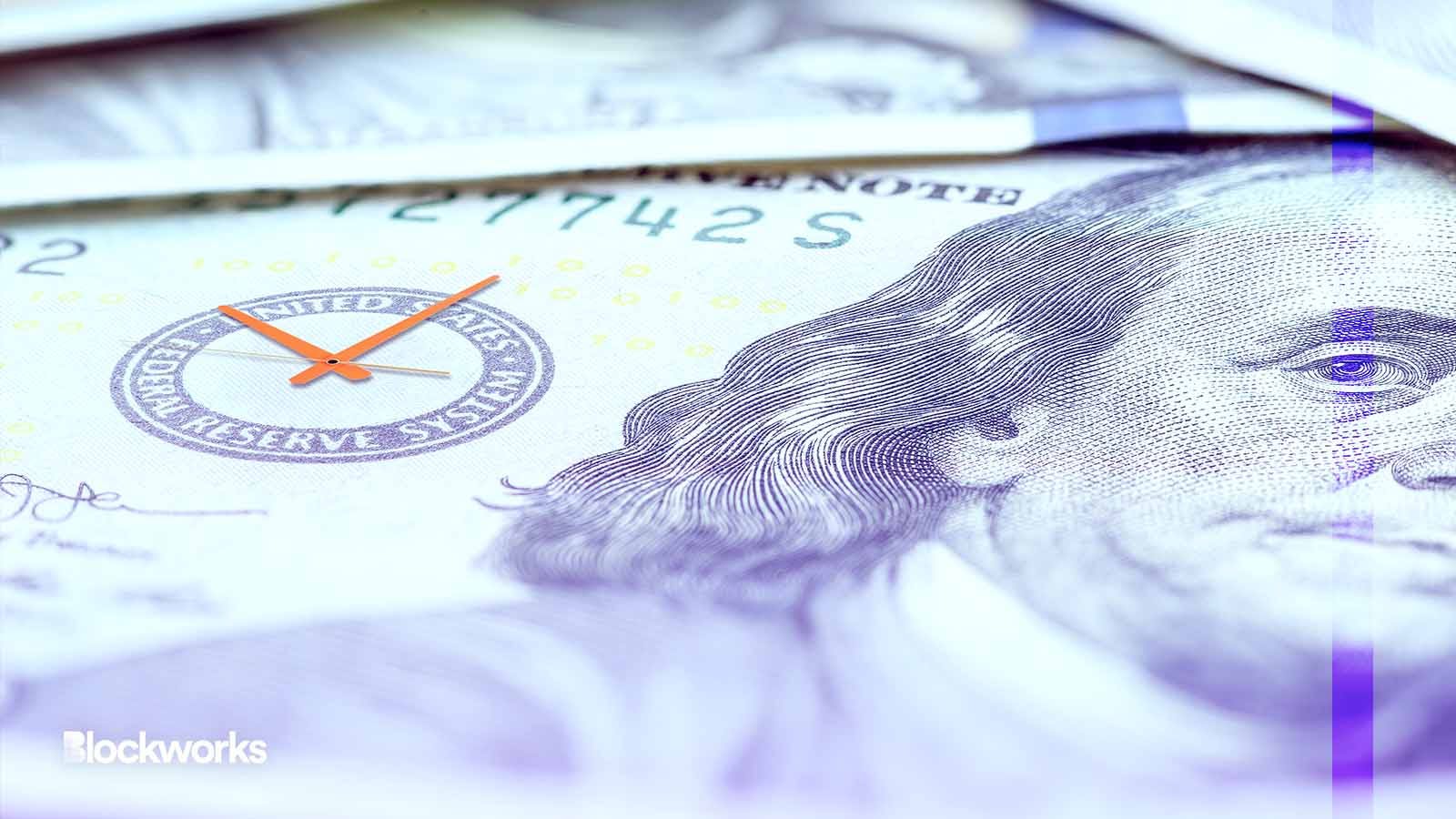Some DeFi Yield Could Still Be Higher Than 10-year US Treasurys
Though the 10-year US Treasury yield increased by four basis points on Monday, DeFi is still offering attractive alternatives

William Potter/Shutterstock modified by Blockworks
The rising 10-year yield on US Treasury bills, which increased by four basis points to 3.506% on Monday, is now higher than many yields that can be earned via DeFi protocols.
The Treasury yield increase hit on Monday as Federal Reserve Chair Jerome Powell suggested interest rate hikes could soon come to an end. The 10-year Treasury yield is one metric of investor confidence in the US market.
At 3.506%, its yield over a decade is now clocking in higher than many DeFi yield-bearing opportunities.
In DeFi, investors often earn yield through yield farming, that is, the process of earning rewards through providing liquidity to token pairs or trading pools.
Decentralized protocols such as Aave, Curve and Compound are often used to facilitate yield farming.
Aave’s annual percentage yield (APY) on stablecoins such as USDC, USDT and DAI are currently at 2.57%, 2.43% and 2.71% respectively.
Compound’s APY for these tokens sit at 1.93%, 2.50% and 1.66%.
Curve’s 3pool’s base APY is at 0.07% with 0.52% – 1.32% in token APY rewards.
Varying DeFi yields may beat Fed’s rate
Although such large DeFi players may not be currently offering higher yields than the Treasury, DeFi yields do vary across the board.
Liquid staking derivatives and service providers on Ethereum — such as Lido, Rocket Pool and Frax Finance — have been offering alluring alternatives to US-backed bonds.
Staking is the process of locking up tokens to participate in the network security of a proof-of-stake blockchain.
Liquid staking derivatives enable token holders to put their tokens that would otherwise sit idly to use, and these protocols have since become a popular investment model.
Lido, one of the largest staking protocols, with over 6.6 million ether (ETH) staked on its platform, offers a 6.0% annual percentage rate (APR) to customers who lock their ETH onto its platform.
Similarly, Rocket Pool offers around 5.17% APR in ETH to customers interested in participating in staking — and around 6.98% APR in ETH and rocket pool rewards to those interested in running a node and stake on its platform.
Frax Finance, especially, is offering attractive returns. Its VST/FRAX pool is offering a base of 6% APR to stakers, but its base APR could be upwards of 20%.
Ethereum is not the only network offering attractive staking solutions. Abundant liquid staking options are also available via Cosmos and Solana as well.
Like all other investments, there are risks associated with staking.
The crypto yield-bearing process staking facilitates can be quite volatile, and the underlying token prices could change quickly due to variable market conditions.
Errors with validator nodes can also be possible, and some tokens may require lock-up periods.
Get the news in your inbox. Explore Blockworks newsletters:
- The Breakdown: Decoding crypto and the markets. Daily.
- 0xResearch: Alpha in your inbox. Think like an analyst.






